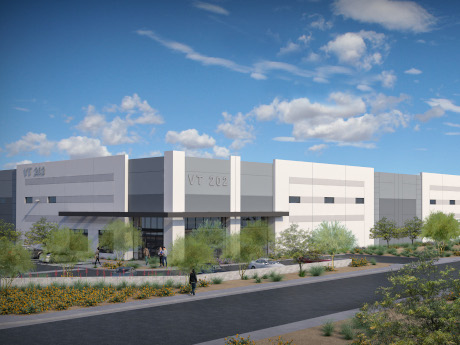By Bill Honsaker, Managing Director, JLL
Metro Phoenix recorded more than 7 million square feet of industrial absorption during the second quarter of 2022, setting a quarterly record for the market. The average size of local industrial deals has also ballooned, increasing 25 percent year over year to a new high of 91,095 square feet.
The Southwest submarket remains the Valley’s industrial powerhouse, accounting for 68 percent of total leasing volume this past quarter. But as demand for big space continues to swell, so does the pressure on inventory. That leaves the market divided into two groups: those already in the market with land or buildings in their possession, and those who missed the land rush and must now buy out someone else’s position.
In fact, across the Valley’s industrial core (roughly bounded by the Loop 303 to the west, Phoenix Gateway Airport to the east, Deer Valley to the north and the lower 202 to the south), would-be investors, developers and tenants are beginning to ask, “Where do we go next?”
This dynamic has become a boon for further-out markets to Phoenix’s east and west, as well as to the south — particularly Central Arizona. With projects like Inland Port Arizona, Pinal County Tech Park and Central Arizona Commerce Park, cities like Casa Grande, Coolidge and Eloy are attracting a growing list of heavy-hitter industrial tenants.
Of the 740 acres at Saint Holdings’ Central Arizona Commerce Park, only 4.5 acres remain available. The rest is now occupied by a 1-million-square-foot Lucid Motors production facility, with another 2.8 million square feet under construction and about 1,300 adjacent acres earmarked for more development. Other tenants at CAZCP include Tractor Supply Company, Wright Asphalt, and two new commitments from LCY Chemicals and Solvay Chemicals. Both vendors support the new North Phoenix Taiwan Semi-Conductor Facility (TSMC) semiconductor facility.
Pinal County Tech Park will be home to a 1-million-square-foot Kohler manufacturing plant. The 2,700-acre Inland Port Arizona, also being developed by Saint Holdings, is home to Nikola Motor Company. Nikola now has hydrogen-electric semi-trucks rolling off its assembly line, with room for more expansion at its 421-acre IPAZ site. Other significant tenants are actively pursuing opportunities at IPAZ, attracted to its access to State Route 87, I-10 and rail.
Historically, most industrial development in Pinal County has been built to suit, but eyes are turning toward spec construction. This allows developers to capitalize on Central Arizona’s zoned, infrastructure-ready land. Any tenants occupying this new space would join a short list of long-time Central Arizona industrial figures, including Walmart, Frito Lay, Daisy Brand and Abbott Labs.
Outside of Pinal County, key areas garnering industrial interest include Buckeye (both along I-10 and heading south along State Route 85), as well as select sites along the Loop 202 South Mountain Freeway extension.
Across Phoenix, demand has pushed rents up about 12 percent in the past 12 months. Fears that inflationary pressures will cause a pullback on activity are, in most cases, overpowered by user demand that continues to propel investors and developers forward. With metro Phoenix fifth in the nation for industrial absorption, the anticipation in the Valley — and beyond — is that users will be there to take the space that is delivered.



